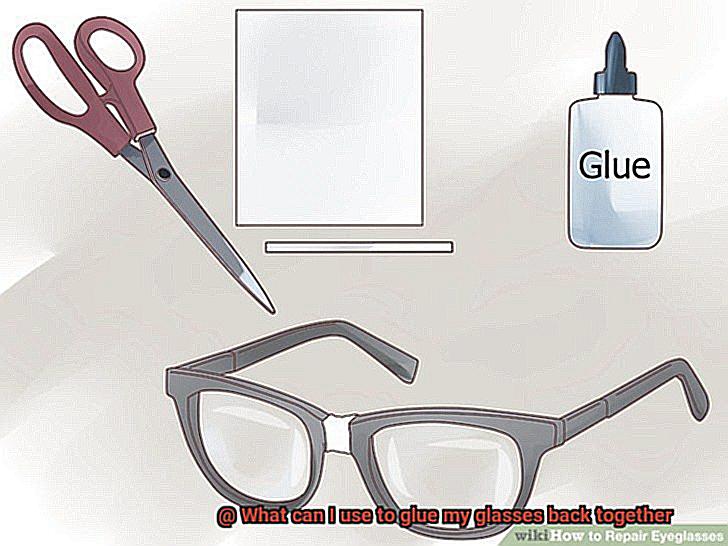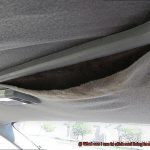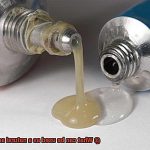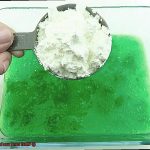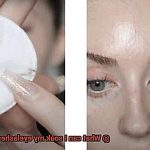The unthinkable has happened – your beloved glasses have met their tragic fate. But don’t panic just yet. There’s a glimmer of hope in the form of adhesive magic that can bring those broken frames back together.
With a wide array of glues at your disposal, fixing your glasses is easier than you might think. However, it’s crucial to choose the right glue for your specific needs and situation.
For quick fixes on the fly, look no further than multipurpose cyanoacrylate adhesive, better known as super glue. This stuff dries faster than a cheetah on roller skates, making it perfect for those moments when time is of the essence. Just remember to use it sparingly – a little goes a long way, and you don’t want any sticky residue ruining your stylish specs.
If you’re after a more professional-grade solution that can withstand the test of time, epoxy resin adhesive is your go-to. This superhero of adhesives boasts unparalleled bonding strength, ensuring a repair that will last longer than an episode binge-watching marathon. It’s especially handy for securing metal frames that need an extra dose of strength.
Before you dive headfirst into gluing mode, there are some essential tips and tricks to keep in mind:
- Cleanliness is next to godliness: Give those broken surfaces a thorough cleaning with lens cleaner or mild soap before attempting any repairs. You want them squeaky clean so that nothing interferes with the adhesive bond.
- Precision is key: Grab yourself a toothpick or small brush and apply the chosen glue with surgical precision directly onto the broken areas. Remember – less is more when it comes to applying adhesive; nobody likes globs of goo ruining their favorite pair of spectacles.
- Patience, young grasshopper: Give that glue some time to work its magic. Follow the manufacturer’s instructions and let it cure fully before putting any pressure on your newly glued glasses. Rushing the process could spell disaster and leave you with a less-than-stellar repair job.
- When in doubt, seek help out: If your glasses have fancy moving parts or you’re just not feeling confident in your DIY skills, don’t hesitate to call in the experts. Opticians or glasses repair pros have seen it all and can save the day when things get a little too complicated.
What is the Best Adhesive for Glasses Repair?
Contents
In this comprehensive guide, we will explore the best adhesives for glasses repair, ensuring that you have all the information you need to make an informed decision and restore your beloved eyewear to its former glory.
Super Glue: The Quick-Fix King
When it comes to quick-drying and strong bonds, cyanoacrylate adhesive, also known as super glue, reigns supreme. This adhesive is ideal for small breaks or cracks in your glasses, as it bonds glass and plastic materials swiftly.
However, exercise caution when using super glue, as it can be harmful if it comes into contact with your skin or eyes. Remember to use a small amount and apply it precisely to avoid any mishaps.
Epoxy Resin: The Mighty and Durable Bond

For more significant repairs or challenging frame materials, epoxy resin is your go-to adhesive. This two-part adhesive requires mixing before application and provides an exceptionally strong and durable bond.
Its resistance to water and temperature changes ensures that your repair lasts for the long haul.
UV-Curing Adhesives: Harnessing the Power of Light
UV-curing adhesives rely on ultraviolet light exposure to form a strong bond. These adhesives are often used in combination with UV lamps or light boxes and offer a reliable solution for glasses repair. However, it is crucial to check the instructions and recommendations to determine if they are suitable for your specific repair needs and materials.
Consult the Experts:
While adhesives can work wonders, it is always wise to seek professional advice. Opticians and eyewear specialists have the expertise needed to guide you toward the best adhesive for your specific glasses and repair requirements. Their knowledge ensures that you make the right choice and achieve a successful repair.
Cyanoacrylate Glue (Super Glue)
Glasses-wearers, have no fear. We’ve all experienced that heart-stopping moment when our precious spectacles break in two. But fret not, for I am here to enlighten you on the wonders and limitations of cyanoacrylate glue, also known as super glue, as a repair solution for your beloved eyewear.
Advantages:
- Lightning-fast bonding time: No more waiting around for hours. Super glue works its magic in mere seconds, ensuring that you can fix your glasses and get back to seeing the world clearly without any unnecessary delays.
- Versatility across materials: Plastic frames? Metal frames? Glass frames? No problem. Cyanoacrylate glue excels at bonding different materials, making it a perfect match for eyeglass frames composed of various components.
- Easy application: Forget complicated instructions and messy applications. Repairing your glasses with super glue is a breeze. Just clean the broken edges, apply a small amount of glue (remember, less is more.), press the pieces together for a few seconds, and voila – your glasses are good as new.
Disadvantages:
- Not suitable for complex repairs: While super glue works wonders for minor breaks, it may not be the best choice for intricate repairs or delicate parts. In such cases, seeking assistance from professional opticians or eyeglass repair services is the way to go. They possess the expertise and tools necessary to handle complex fixes with precision.
- Temporary fix: Beware of long-term expectations. Although cyanoacrylate glue forms a strong bond initially, exposure to heat or moisture can weaken or make it brittle over time. Consider this a temporary solution and plan for a more permanent fix down the line.
In summary, cyanoacrylate glue, or super glue, can be a lifesaver when it comes to swiftly and effectively fixing your glasses. Its speedy bonding and strong adhesive properties make it an ideal choice for minor breaks in eyeglass frames.
However, it’s important to use the glue sparingly and seek professional assistance for complex repairs. Remember, while super glue can save the day temporarily, it may not provide a long-lasting solution for all cases.
Epoxy Resin
We’ve all experienced that heart-wrenching moment when our beloved frames break. But fret not, because today I will unveil the superhero of adhesives: epoxy resin.
In this comprehensive guide, we will explore the magical world of epoxy resin and learn how to fix your glasses with precision and style. So grab your broken specs and get ready for a transformative journey.
The Marvels of Epoxy Resin
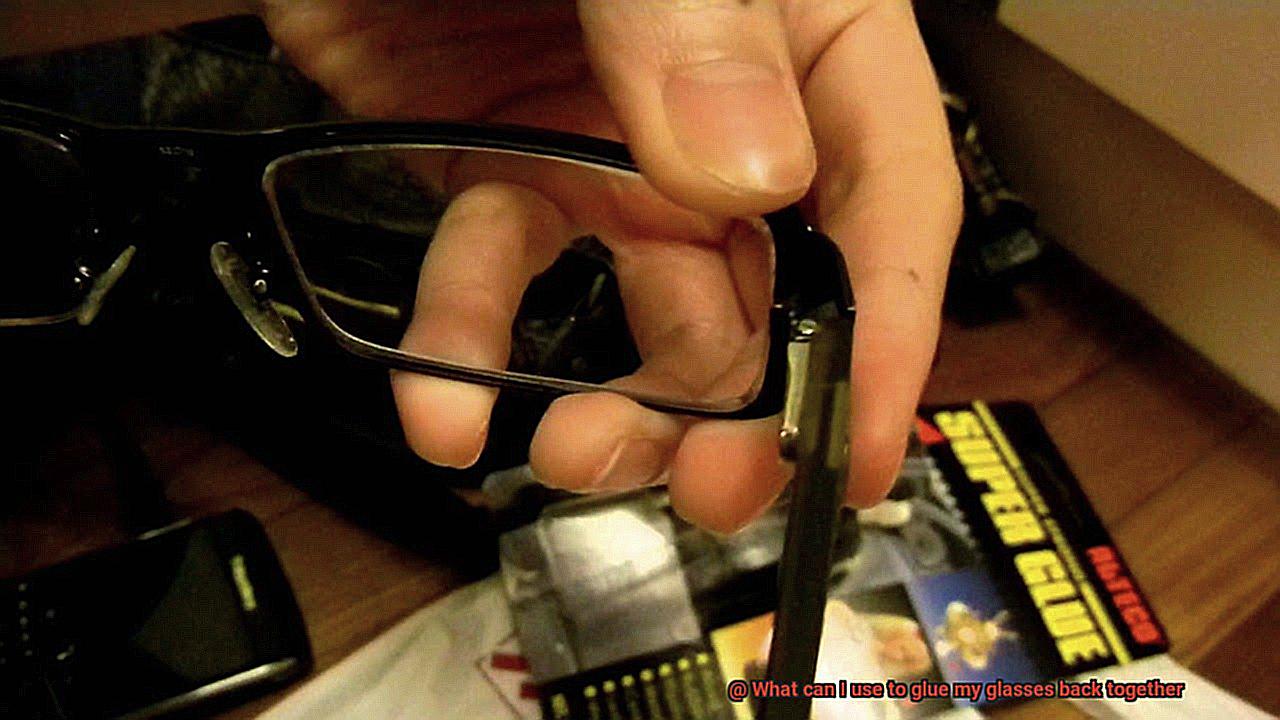
Epoxy resin is a two-part adhesive that consists of a resin and a hardener. When these two components are combined, a chemical reaction occurs, resulting in a powerful and enduring bond.
This unique adhesive is renowned for its ability to adhere to various materials found in eyewear, such as metal, plastic, and even glass lenses.
Its versatility makes it an ideal choice for repairing different types of glasses, including prescription glasses, sunglasses, and reading glasses.
The Art of Repair
To embark on your eyeglass restoration adventure, gather the necessary materials: epoxy resin adhesive, disposable mixing container, and a small applicator like a toothpick or wooden stick. Remember to work in a well-ventilated area and don protective gloves to ensure your safety.
Now let’s dive into the step-by-step process of fixing your glasses using epoxy resin:
Step 1: Prepare Your Workshop
Find yourself a well-ventilated workspace and put on those protective gloves. Safety is paramount.
Step 2: Achieve Perfect Harmony
Follow the instructions on the packaging to determine the precise proportions of resin and hardener required. Accuracy is key here, as even the slightest miscalculation can impact the strength of the bond. Pour both components into a disposable mixing container and blend them thoroughly using the applicator of your choice.
Step 3: The Artful Application
Take your trusty applicator and apply a generous, even layer of epoxy resin to the broken parts of your glasses. Ensure that both sides are coated for maximum bonding power. Don’t be shy – remember, you want a secure bond that will withstand the test of time.
Step 4: The Union of Broken Parts
Gently align the fractured pieces of your glasses and press them together firmly. Hold them in place for the recommended curing time specified by the adhesive manufacturer. During this crucial period, refrain from multitasking – resist the temptation to check your phone or engage in impromptu jumping jacks.
Step 5: Admire and Refine
Once the curing time has elapsed, inspect your handiwork. Are the pieces securely bonded together? If you spot any excess adhesive, delicately remove it using a clean cloth or cotton swab dampened with rubbing alcohol. Be mindful not to scratch those precious lenses in the process.
Double-Sided Tape
Double-sided tape is a remarkable adhesive solution that comes to the rescue when your beloved glasses suddenly break. Picture this: you’re going about your day, rocking your favorite pair of specs, and then disaster strikes – a snap, a crack, and your heart sinks. But fear not, my fellow glasses wearers, because we have a secret weapon in our arsenal – double-sided tape.
Now, you might be wondering, “Why would I use tape to mend my precious specs?” Well, let me tell you, there are some pretty nifty advantages to using this ingenious invention.
Let’s start with convenience. Traditional glues can be a real hassle – fiddly application, long drying times, and the dreaded risk of glue smudges. Ain’t nobody got time for that. But fear not, because double-sided tape swoops in like a superhero, ready to save the day. With a swift application, it instantly bonds those broken pieces together, no waiting around for hours on end. Quick and easy – just how we like it.
But that’s not all – double-sided tape offers another superpower: flexibility. Glasses frames endure a lot of stress and bending during everyday use. So why use a rigid adhesive that could potentially crack under pressure? Double-sided tape comes to the rescue with its flexible bond that can accommodate these movements. It adds an extra layer of resilience to your glasses, reducing the risk of further damage or breakage. Your frames will thank you for this little act of kindness.
However, it’s crucial to choose the right tape for the job. Look for a high-quality tape specifically designed for bonding materials like plastic or metal. You want a strong and durable bond that can withstand the wear and tear of daily glasses usage. And don’t forget to clean those broken surfaces before applying the tape – cleanliness is next to adhesive greatness.
Now, here’s an important disclaimer – double-sided tape is not a permanent fix for severely damaged glasses. In those cases, it’s always best to seek professional assistance from an optician or eyewear repair service. They have the expertise and tools to provide long-lasting solutions for your beloved spectacles.
Preparing Surfaces for Bonding
Properly preparing surfaces for bonding is a crucial step in achieving a strong and durable bond. Whether you’re repairing your beloved pair of glasses or tackling any other bonding project, following these steps will ensure success.
- Clean the surfaces: Start by using a mild detergent or soap and warm water to clean the surfaces that need to be bonded. This step is essential to remove any dirt, oils, or residue that could interfere with the bonding process. Be sure to avoid harsh chemicals or abrasive cleaners that could damage your materials.
- Dry thoroughly: After cleaning, take the time to dry the surfaces completely using a soft, lint-free cloth. Any lingering moisture can disrupt the bonding process, so don’t rush this step. Ensure that the surfaces are completely dry before moving on.
- Inspect and smooth: Take a close look at the areas that need to be bonded. If you spot any chips, cracks, or rough edges, it’s important to smooth them out before applying adhesive. Use fine-grit sandpaper or a nail file with a gentle touch to achieve a smooth and even surface.
- Roughen the surfaces: This step might sound counterintuitive, but trust me, it’s necessary. Grab some sandpaper or a scoring tool and gently rub it against the surfaces in a back-and-forth motion. This creates tiny scratches or grooves that provide more surface area for the adhesive to bond to. Think of it as giving your adhesive a better grip.
- Remove dust and debris: After roughening the surfaces, it’s crucial to banish any dust or debris that might have accumulated. Use a clean, dry cloth or some compressed air to ensure that the surfaces are spotless. Even the tiniest specks of dust can interfere with the bonding process, so thoroughness is key.
- Prime for success: Consider this step as adding the secret sauce to your bond. Before applying the adhesive, use an appropriate primer or adhesion promoter. These products work wonders, especially on smooth or non-porous surfaces, by enhancing the bonding strength and durability. Follow the manufacturer’s instructions and allow the primer to dry completely before proceeding with the adhesive.

Handling Your Glasses During Repairs
Oh no. Your beloved glasses have met an unfortunate fate and now require some tender loving care. But before you embark on the journey of repairing them yourself, it’s crucial to understand the importance of handling your glasses with care during the repair process. After all, you wouldn’t want to create more damage or end up with wonky spectacles, right? Fear not, for we have compiled a handy guide to help you navigate this delicate task.
Treat them like a newborn:
When removing your glasses, cradle them gently by the temples (the arms) and slide them off your face with care. This will prevent any unnecessary bending or twisting that could exacerbate the damage.
Lens TLC:
The lenses of your glasses are delicate creatures that easily succumb to scratches. Thus, it’s imperative to resist the urge to touch them with your fingers during repairs. Oils and debris from your hands can wreak havoc on these precious windows to the world.
Pick a pristine workspace:
A clean and clutter-free area is essential when working on your glasses. This ensures that no dirt or debris finds its way onto the lenses or frames during the repair process. Think of it as giving your glasses a spa day.
Sorted components, sorted mind:
If your glasses have multiple parts that need attention, lay them out in an organized manner. This will help you keep track of everything and prevent any missing pieces from further complicating the repair process.
Tiny parts, big precautions:
To avoid losing those pesky little screws or other tiny components, place a cloth or towel on your workspace and work over it. This simple trick prevents small parts from rolling away and vanishing into thin air.
Embrace the gentle touch:
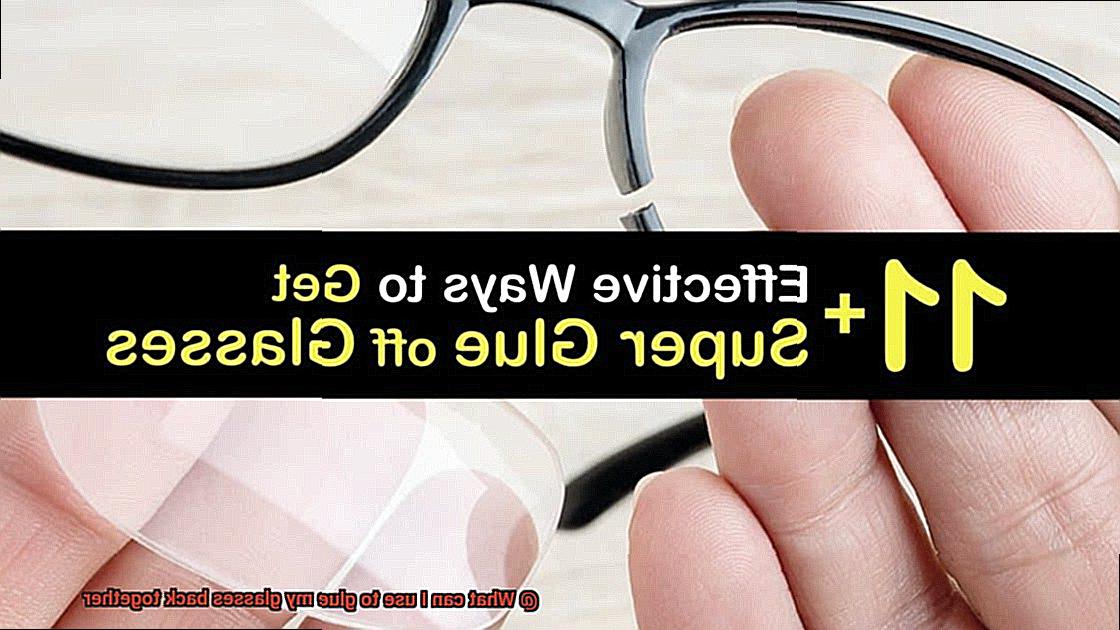
When handling your glasses during repairs, remember that less is more. Applying excessive force can potentially cause further damage to the frames or lenses. So, channel your inner Jedi and use gentle pressure.
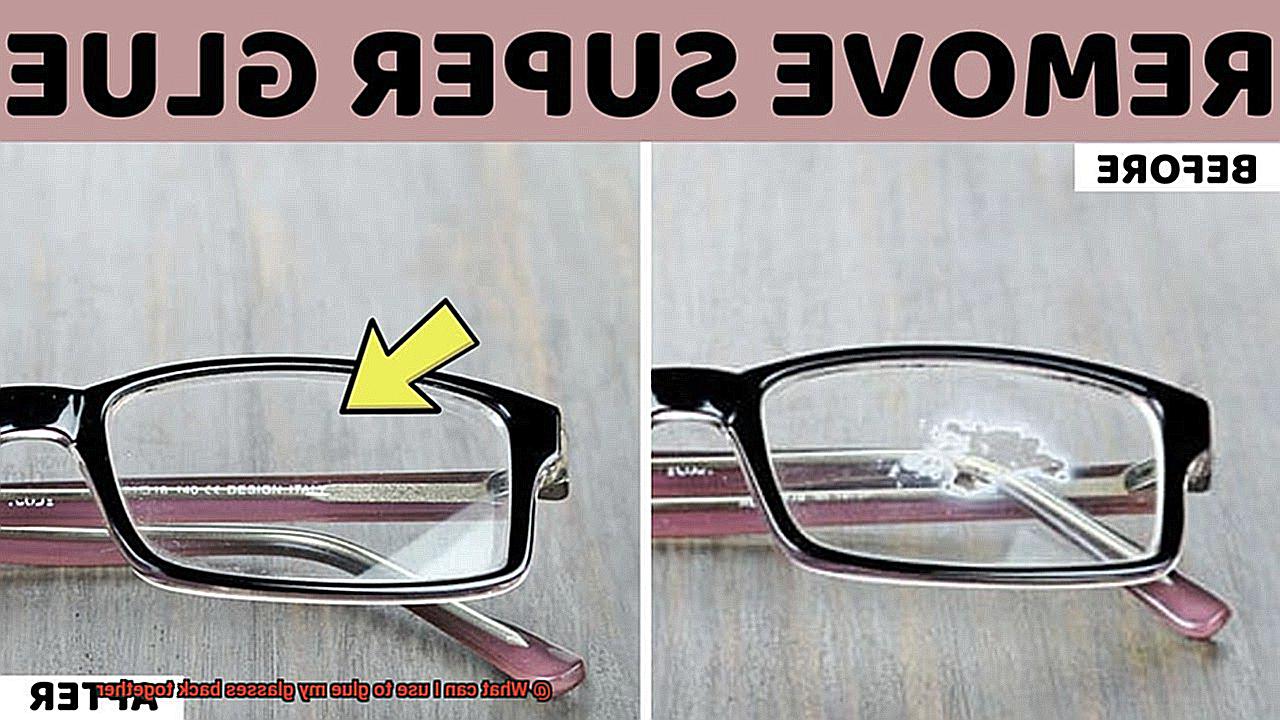
The lens of cleanliness:
Before embarking on repairs, make sure your glasses are squeaky clean. Use a microfiber cloth or specialized lens cleaning solution to remove any dirt, smudges, or fingerprints from the lenses. A pristine lens ensures a clearer view of your masterpiece repair job.
Adhesive etiquette:
If you plan to use adhesive for repairs, exercise caution and apply it only where necessary. The last thing you want is glue oozing onto the lenses or bonding unintended areas together.
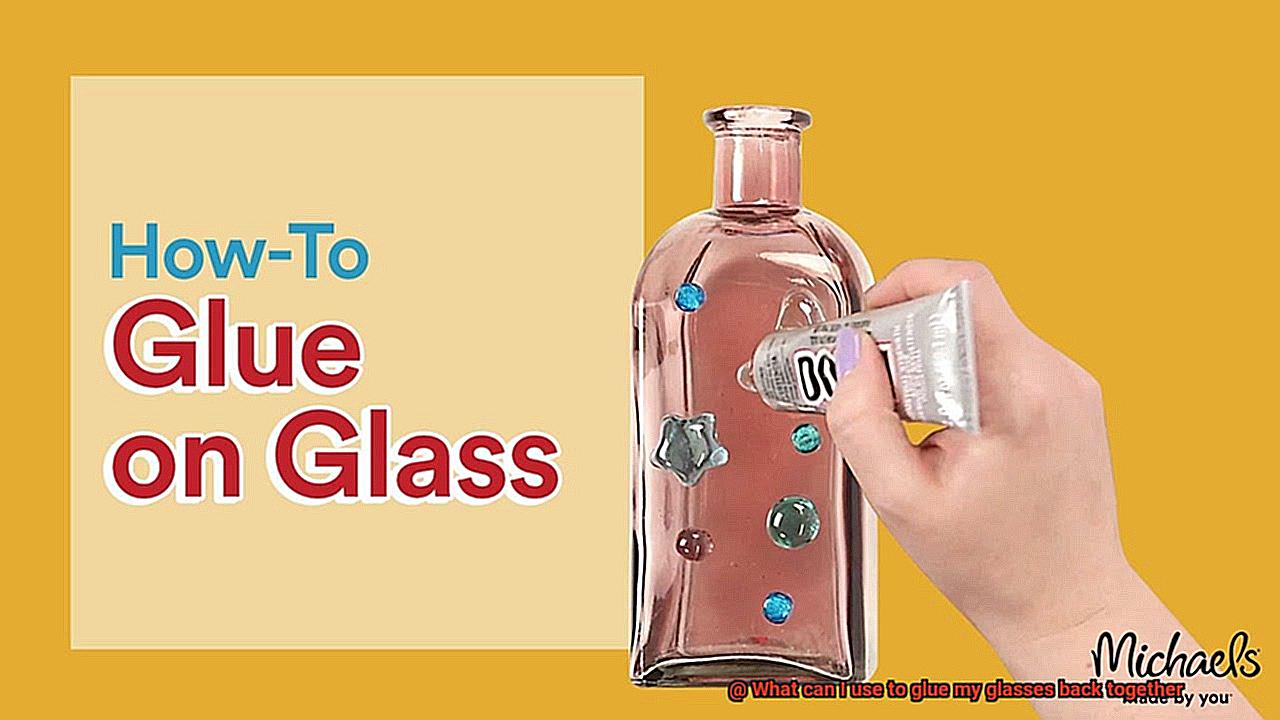
Professional Eyeglass Repair Services
When it comes to fixing your precious eyeglasses, finding a reliable option is crucial. While you may be tempted to tackle the repair yourself, professional eyeglass repair services offer a range of benefits that make them worth considering.
In this article, we’ll explore why professional services are the glue that holds your eyeglass repair needs together.
Expertise and Specialized Tools:
Professional eyeglass repair services employ trained technicians who possess the knowledge and skills required to handle various types of repairs. These experts have access to specialized tools and equipment necessary for precise and efficient repairs.
With their expertise, they can identify and address specific issues with your glasses, ensuring a high level of attention to detail.
Warranties and Guarantees:
One significant advantage of choosing professional services is the peace of mind that comes with warranties or guarantees on their work. If any issues arise after the repair, you can have it fixed without incurring additional costs. This not only protects your investment but also reflects the confidence these services have in their expertise.
Comprehensive Services:
Professional eyeglass repair services go beyond simple fixes. They provide frame adjustments or replacements, lens replacements, and thorough cleaning. This means that not only will your glasses be repaired, but they will also be properly adjusted and cleaned for optimal performance.
Quality Matters:
While DIY options might seem more cost-effective, professional repair services offer a higher level of quality and expertise. This is especially important if you have expensive or designer glasses that require delicate handling. Investing in professional repair ensures you receive the best outcome for your valuable eyewear.
Research and Reviews:
To find reputable and trustworthy service providers, it’s essential to do some research and read reviews about different companies. Look for providers with a track record of delivering quality repairs and customer satisfaction.
Pbf7VqGXKHo” >
Conclusion
When your glasses break, it can be a frustrating experience.
But fear not, because there are several options available to glue them back together. So, what can you use?
Well, one popular choice is super glue. Its strong adhesive properties make it perfect for fixing broken frames.
Another option is epoxy resin, which creates a durable bond that can withstand everyday wear and tear. If you prefer a more temporary fix, clear nail polish can also do the trick.
Its quick-drying formula provides a temporary hold until you can get professional help. Lastly, if you’re in a pinch and don’t have any of these materials on hand, duct tape can work as a temporary solution until you can find a more permanent fix.
Remember to clean the surfaces before applying any adhesive and let it dry completely before wearing your glasses again.

